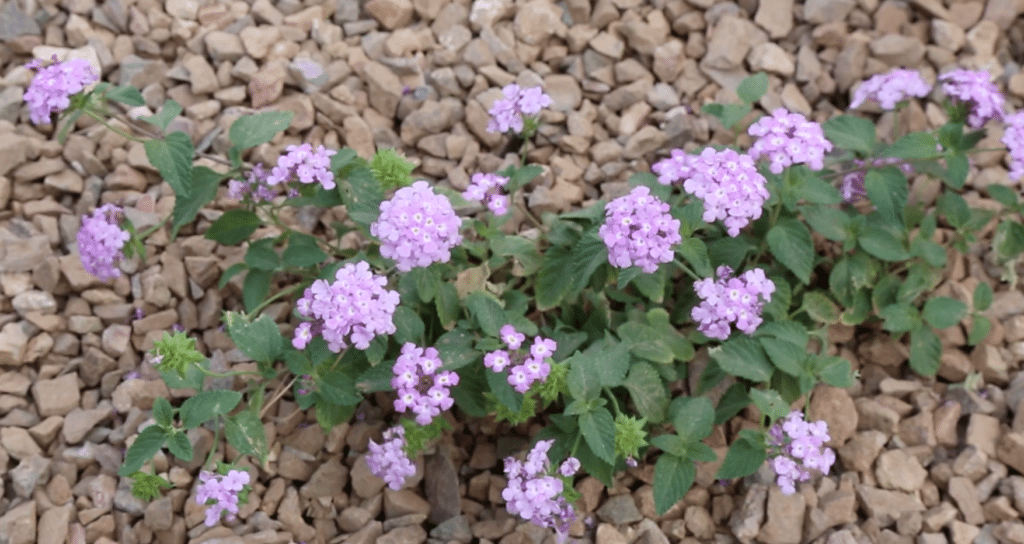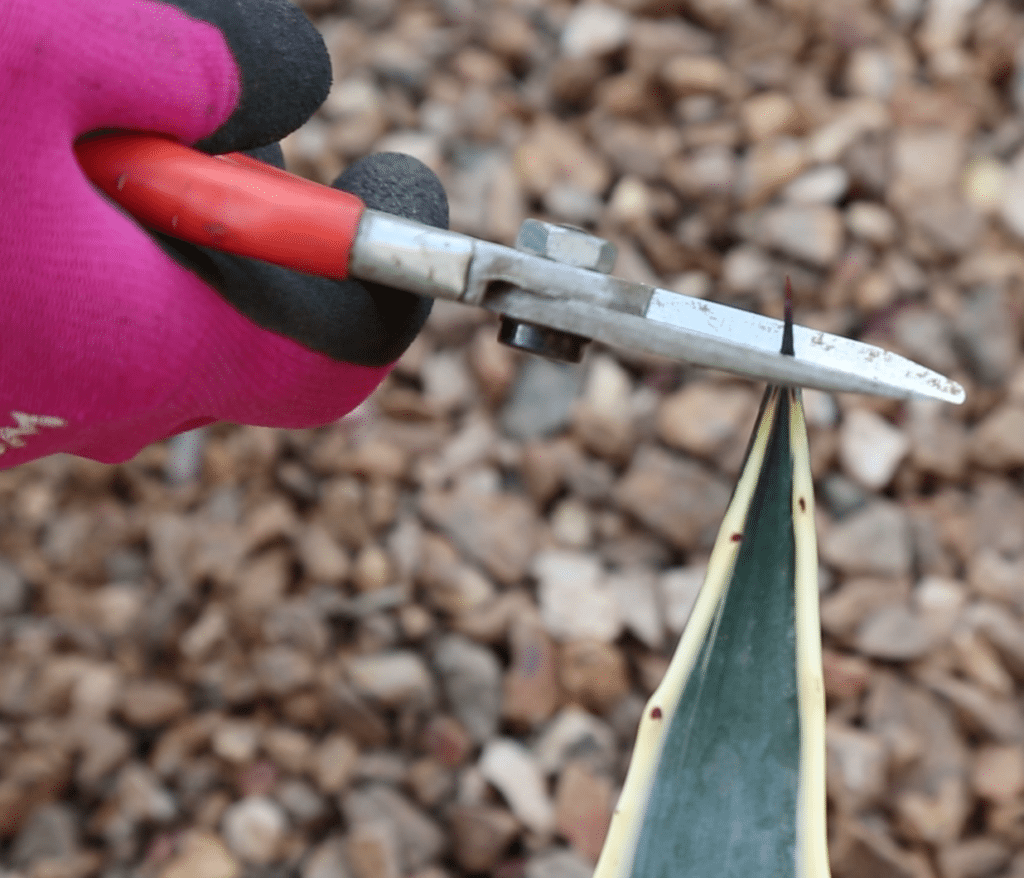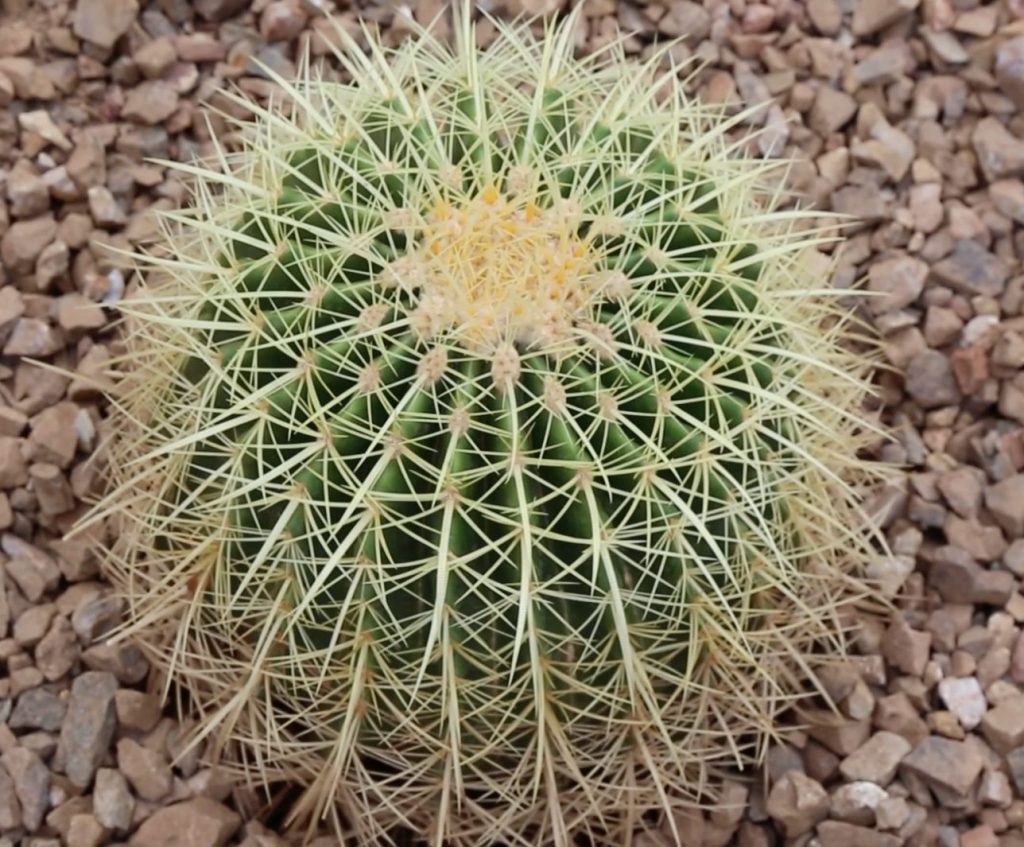The transformation from Drab to Fab may have only taken weeks, but with proper care of the new landscape plants, the fab can be everlasting. Join winner Lisa O. as she learns how to care for her brand new plants as they grow and evolve in her landscape.
In episode 9 of our 10-part series, Jody Latimer, Environmental Resource Supervisor with the City of Peoria, does an excellent job introducing each of the plants in the new landscape and explaining how to successfully care for each plant. The good news is that with a Xeriscaped yard, the majority of the plants are low maintenance. Desert-adapted and native plants do not need fertilizer and are well adapted to our hard soil.
Yet all landscapes still need some care, and you may have some questions. How long should one stake a plant? How does one know when to prune a young plant to prevent a future problem? Check out the episode to learn more while gazing at beautiful plants!
Here are some other important considerations when it comes to a keeping a low-maintenance, water-wise landscape growing strong and looking fabulous.
MOW
During the summer, never cut more than one-third of the height of your grass. Not sure how to do that? Set your mower to its highest setting. Taller grass cools the soil, encourages deep roots, and reduces stress. If you mow your grass too short, root growth slows down, making the grass more susceptible to heat and drought. Mowing grass too short also encourages the grass seeds to grow faster, increasing the water demand of the grass and necessitating more frequent mowing. After mowing, leave the grass clippings on the lawn to return nutrients to the earth and encourage growth. BONUS TIP: sharpen your mower blades once a month during the summer. Dull blades tear at the grass, rather than cutting it cleanly, causing grass to use more water to recover.
WEED CONTROL
Weeds are thieves. They steal nutrients and water from your grass and other plants. Keep weeds under control by weeding early in the year and consistently throughout the growing season.
However, if weeds are already well established in the landscape, it might be best to remove them with a weeding tool or by hand. When they’re close to maturity, chemical treatment is not as effective. When pulling established weeds, wait until after watering or rain for easier removal and a better chance to get the whole plant – roots and all.
While many weed seeds can be carried into your yard by the wind, birds, or other animals, make sure you don’t seed your own crop. It’s important to remove weeds in the landscape before they flower to prevent seeds from forming and reseeding. Weeds will also germinate when soils are disturbed. After your initial landscape installation, there will likely be weed problems for the first couple of years. After that, keep soil disturbance to a minimum, if possible.
FERTILIZE
Adding a light top dressing of compost or organic fertilizer does wonders. It reduces thatch buildup on lawns, improves soil texture and increases root mass and surface area. “Top dress” your lawn and plant areas early in the year when conditions are wet. Spring is a good time to fertilize so that nutrients are available as many plants begin more active growth.
Luckily, most of our native desert plants evolved in nutrient-poor soils and are adapted to grow without supplemental fertilizers. Also keep in mind that many nutrients, especially nitrogen, encourage growth and can increase water needs. So consider skipping the fertilizer for native plants.
However, non-native plants may need special nutrients to stay healthy in our soils. If this is the case, follow product label recommendations, and only fertilize established plants.

PRUNE
Avoid heavy pruning. Pruning stimulates growth, so plants require more water. Make sure you prune your trees and shrubs in the dormant (winter) season before the weather gets hot and dry. Never prune more than 25 percent of a plant at a time.
You may have also noticed that plants out in the desert, especially trees, grow low to the ground. When you think about it, this makes sense – the tree is shading itself. Low branches provide shade for the trunk and the roots. The shade also keeps the surrounding soil cooler so moisture will be maintained longer, and litter falls and stays in place providing natural mulch for the plant.
This is why it’s even more important not to over-prune before the onset of the hot summer months. Leave low branches on trees and shrubs so the plant can provide much-needed shade for itself.
However, there may be dead branches to remove, a need to redirect plant growth, or an occasional reshaping. Quality pruning tools as well as some professional guidance will help you prune properly.

WATER
Over half of household water – in some cases up to 70 percent is used outdoors. That means saving water in your landscape is one of the best and easiest ways to reduce your outdoor water use. Learn to water by the weather, and you can reduce water waste and increase plant health at the same time. Water – Use It Wisely’s Landscape Watering by the Numbers guide shows you how to get started. It’s as easy as 1-2-3!
Find these helpful links on plant maintenance:
- Visit our page on Landscape Watering.
- This booklet, Xeriscape: Landscaping with Style in the Arizona Desert, includes Staking information and diagrams.
- Learn how to prune trees from this Maricopa Cooperative Extension publication.
- Learn how to prune shrubs from this Maricopa Cooperative Extension publication.


